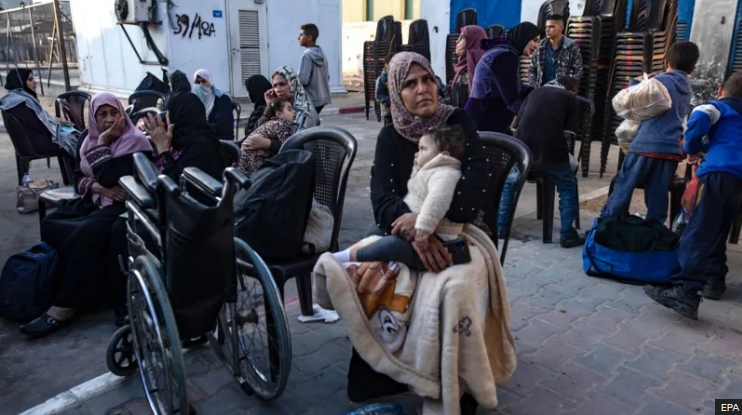Medical Evacuations: A Lifeline for Saving Thousands of Lives
Medical evacuations play a crucial role in preserving lives, especially in regions affected by disasters, conflicts, or public health emergencies. The World Health Organization (WHO) has consistently emphasized the importance of timely and efficient medical evacuations, which can make the difference between life and death for many individuals. In this article, we explore the significance of medical evacuations, their various types, and the challenges involved in ensuring their success.
1. Understanding Medical Evacuations
Medical evacuation refers to the process of moving a patient or injured individual from a place of danger or limited medical resources to a location where proper care can be provided. This could be due to natural disasters like earthquakes or floods, conflicts, disease outbreaks, or other emergencies. Medical evacuations are vital in ensuring that people receive the necessary care, especially when local healthcare infrastructure is overwhelmed or unavailable.
The process often involves the use of air, land, or sea transportation, depending on the urgency and geographical location. In many cases, a medical team accompanies the patient to provide care during the evacuation process.
2. The Role of the World Health Organization (WHO)
The WHO plays an essential role in facilitating medical evacuations globally, particularly in conflict zones and regions with limited healthcare access. Through its emergency health programs, the WHO coordinates with governments, humanitarian organizations, and other international agencies to ensure that medical evacuations are carried out safely and effectively.
In many conflict-affected areas, the WHO works closely with local healthcare providers to identify patients in need of urgent evacuation and then coordinates the logistics and medical support required. The organization also provides training to health professionals in emergency evacuation techniques, helping to enhance the capacity of local healthcare systems in responding to medical emergencies.
3. Types of Medical Evacuations
There are several types of medical evacuations, each suited to different needs and situations. Some of the most common types include:
A. Air Evacuations
Air evacuations are often the quickest and most efficient way to transport critically ill or injured patients from a remote or conflict-affected area. Air ambulances, usually equipped with specialized medical equipment, transport patients to well-equipped hospitals. Helicopters are also used in difficult terrain, such as mountainous areas or regions with poor road infrastructure.
B. Ground Evacuations
In some situations, ground evacuations using ambulances or other vehicles may be the most feasible option. These are typically used when air evacuation is not possible, either due to weather conditions, infrastructure issues, or other logistical constraints. Ground evacuations are often necessary in urban settings or locations with better road connectivity.
C. Sea Evacuations
For island nations or coastal regions where roads or air transportation may not be viable, sea evacuations can be a critical option. Specialized ships and boats are used to transport patients to medical facilities in other regions. These evacuations are essential for areas like the Pacific islands, where access to healthcare can be limited.
D. Cross-Border Evacuations
In many cases, medical evacuations require crossing international borders, especially when patients are seeking treatment in a neighboring country with better healthcare facilities. Cross-border evacuations are often coordinated by international organizations and require close collaboration between multiple governments.
4. Challenges in Medical Evacuations
While medical evacuations are a vital tool in saving lives, several challenges complicate the process.
A. Logistical Constraints
One of the most significant challenges in medical evacuations is the logistical aspect. Evacuations, especially in remote or conflict-affected areas, require significant planning and coordination. Factors like poor infrastructure, unstable political environments, and limited transportation options can delay evacuations and affect the quality of care.
B. Security Concerns
In conflict zones, security concerns can severely impact the ability to carry out medical evacuations. Hospitals and medical teams may be at risk of attack, and there may be restrictions on movement imposed by warring factions. The safety of medical staff, patients, and evacuation teams must always be prioritized.
C. Resource Limitations
In some regions, there is a shortage of specialized medical equipment, vehicles, or trained medical personnel required for effective evacuations. This shortage may lead to delays, especially in areas where large-scale evacuations are needed, such as during natural disasters or disease outbreaks.
D. Weather and Environmental Conditions
Harsh weather and environmental conditions can often delay or impede medical evacuations, particularly in mountainous, flood-prone, or remote areas. Storms, heavy rain, or extreme temperatures can make it difficult to use air transport, and ground evacuations may be hindered by mudslides or floods.
5. The Impact of Medical Evacuations
Medical evacuations have a profound impact on individuals, communities, and the broader healthcare system.
A. Saving Lives
The most immediate and critical impact of medical evacuations is the preservation of life. Patients who would otherwise have little to no access to urgent care can receive treatment that can save their lives or prevent permanent disability. This is particularly important for patients with severe trauma, complex surgeries, or critical illnesses that require specialized care.
B. Alleviating Pressure on Local Healthcare Systems
In areas where healthcare systems are overwhelmed, medical evacuations help alleviate pressure on local hospitals and clinics. By transferring patients to better-equipped facilities, local healthcare providers can focus on treating the immediate needs of others.
C. Enhancing Global Health Resilience
Medical evacuations also contribute to the broader resilience of global health systems. By building the capacity to respond to emergencies and providing care during crises, evacuations improve health infrastructure in the long term, strengthening preparedness for future outbreaks, natural disasters, or conflicts.
6. Conclusion
Medical evacuations are a vital part of global healthcare responses to emergencies, ensuring that those affected by disasters, conflicts, or diseases receive the treatment they urgently need. While there are several challenges, such as logistical barriers, security risks, and resource constraints, the efforts of organizations like the WHO help to overcome these obstacles and save thousands of lives. As the world continues to face a wide range of health challenges, the importance of efficient and well-coordinated medical evacuations will only grow.


Leave a Comment